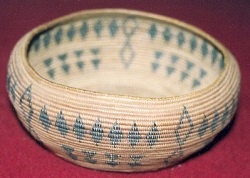Like most of his contemporaries, C. E. Kelsey was an assimilationist. Even as he collected Native American artifacts and linguistic data, Kelsey believed Indigenous people should aim to take their place in the dominant white society as Christian citizens. The people Kelsey sought to help may not have appreciated his efforts to advance a goal that they did not choose. Perhaps as a result, I have found few signs of appreciation of Kelsey’s work from California Indians. Here are three I know of:
- Kelsey helped Lucy Hite (Miwok) by protecting her land in Mariposa County. According to her land entry file at the National Archives, she was in a common law marriage with a wealthy white miner who left her and later died without providing for her. Hite was not able to obtain title to the land on which she had lived since about 1890. By 1909 others desired her land and she was having trouble holding it. Hite’s son wrote to the commissioner of Indian affairs for help, and the commissioner asked Kelsey to investigate. Kelsey visited Hite and helped her file an allotment application. He reported that she was “about seventy years old but as smart and vigorous as most people a good deal younger. She may live to demand a final patent yet.” As a thank you for saving her home, Hite made a basket for Kelsey (photo above), telling him as she presented it that it looked like an empty basket, but it was really her grateful heart. The basket and Kelsey’s handwritten account of the story were passed to his granddaughter.
- After giving a lecture in California many decades after Kelsey’s death, his grandson was approached by an Native American man who told him with great emotion, “Your grandfather’s name is sacred to our family. He saved our ranch from some bad men who had filed a claim on it.”
- The Pechanga Band of Luiseño Indians named a restaurant and bar “Kelsey’s” at their resort casino in Temecula, California. According to a news release of November 11, 2015, “Kelsey’s restaurant is named after C.E. Kelsey, a United States Bureau of Indian Affairs agent assigned to work with and address concerns of California tribes in the early 1900s. In 1906, C.E. Kelsey sent a report advising the Commissioner of Indian Affairs (the title at the time) to allot additional land to the Pechanga Tribe as its existing 3,600 acre reservation contained less than 300 farmable acres and no sustainable well water source. In 1907, the U.S. government purchased an additional 235 acres to be added to the Pechanga Tribe’s land. This would be known as the Kelsey tract which nearly 100 years later, Pechanga Resort & Casino would be built.”
